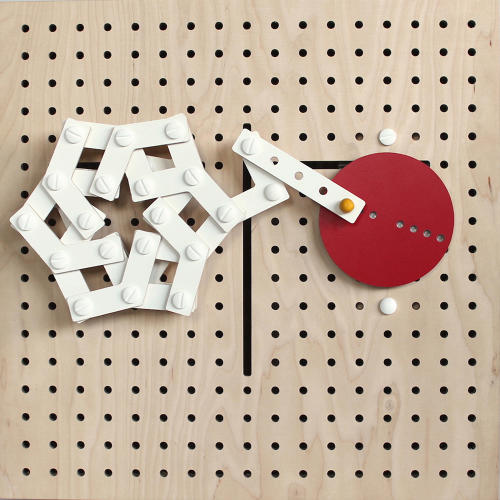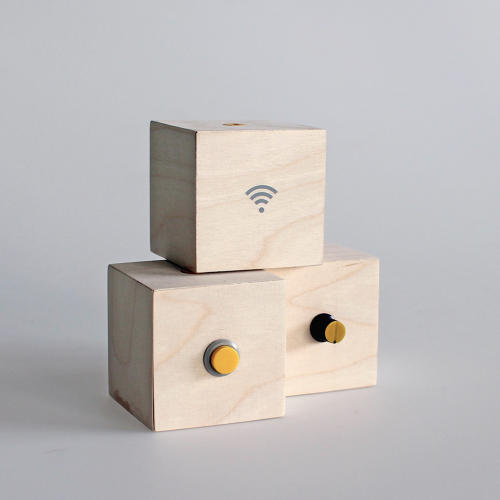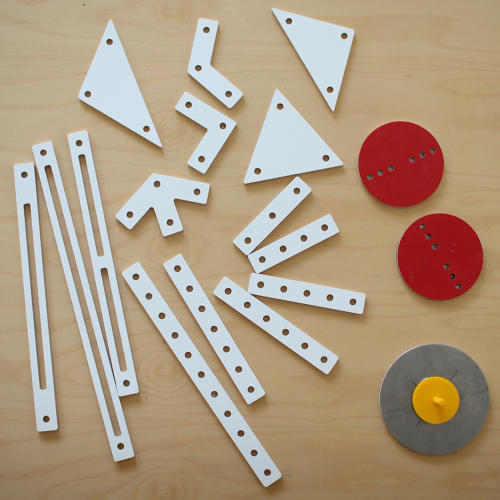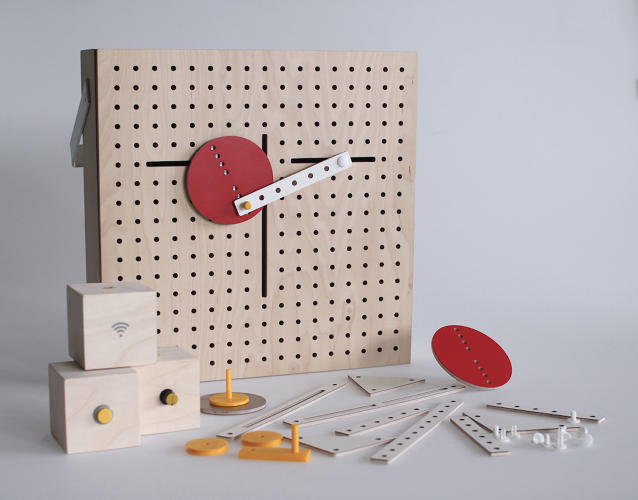A Clever Modular Toy That Teaches Kids Kinetic Design
LINKKI is a kinetic toy construction set based on planar linkage mechanisms that allows kids to design simple movements.
While kids toys aren’t typically known for their tasteful design (looking at you, Barbie Dream House), there are some notable exceptions: the Eames’ series of toys, Alexander Calder’s circus, Bauhaus blocks, and Friedrich Fröbel’s Gift, to name a few. It was that last toy—which Fröbel designed to demonstrate the connection between life, science and art—that inspired Eunyoung Park while getting an MA in new media at Aalto University in Helsinki. Looking for a way to teach the complex concepts of kinetic design, Park created LINKKI, a simple, beautiful modular toy that kids can use to design movement.
The kit comes comes with a set of bars and shapes that can be powered by three different types of motors: full rotation, limited rotation, and an interactive motor that connects to Wi-Fi. By arranging the parts on a peg board and putting them to motion, kids can easily design simple movements and create various kinetic projects. Park suggests prototyping simple models and robots, or creating a drawing mechanism that can make a sketch (as seen in the video above), but also notes that the possibilities are endless.
“The flat mechanism makes the design process with which engineering such as mechanics, robotics, electronics, and model making is involved feel like just drawing on the paper: fast, easy, and intuitive,” Park writes in a Medium post. “Flat parts also enables users to make their own parts with on-the-shelf material such as cardboard—that is, it’s easy to hack and open-ended.”
While still in the prototyping stage, LINKKI is the latest of a group of new and innovative tools that aim to get kids more interested in STEM subject by harnessing the power of play. By distilling a complex science down to a simple and intuitive toy, Park hopes kids will “approach this in the more casual and design-and-art-oriented way just like drawing on the paper.”




Fast Company , Read Full Story
(187)


